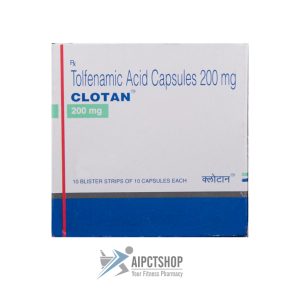Clonidine Information
Pronunciation
(KLON i deen)
What is this drug used for?
– It is used to treat high blood pressure.
– It is used to treat attention deficit problems with hyperactivity.
– It is used to control pain when infused into the spine.
– It may be given to you for other reasons. Talk with the doctor.
Frequently reported side effects of this drug
– Dry mouth
– Constipation
– Fatigue
– Headache
– Nausea
– Loss of strength and energy
– Trouble sleeping
– Nightmares
– Lack of appetite
– Abdominal pain
– Irritability
– Sweating a lot
– Vomiting
– Noise or ringing in the ears
Other side effects of this drug: Talk with your doctor right away if you have any of these signs of:
– Severe dizziness
– Passing out
– Slow heartbeat
– Fast heartbeat
– Abnormal heartbeat
– Contact lens discomfort
– Severe skin irritation
– Skin discoloration
– Skin redness
– Burning of skin
– Difficulty breathing
– Slow breathing
– Shallow breathing
– Confusion
– Signs of a significant reaction like wheezing; chest tightness; fever; itching; bad cough; blue skin color; seizures; or swelling of face, lips, tongue, or throat.
Medication Safety Issues
Sound-alike/look-alike issues:
CloNIDine may be confused with Clomid, clomiPHENE, clonazePAM, cloZAPine, KlonoPIN, quiNIDine
Catapres may be confused with Cataflam, Combipres
High alert medication:
The Institute for Safe Medication Practices (ISMP) includes this medication (epidural administration) among its list of drug classes which have a heightened risk of causing significant patient harm when used in error.
Geriatric Patients: High-Risk Medication:
Beers Criteria: Clonidine is identified in the Beers Criteria as a potentially inappropriate medication in patients 65 years and older (independent of diagnosis or condition) for hypertension treatment due to high risk of CNS adverse effects and risk of bradycardia and orthostatic hypotension associated with central alpha blockers. Avoid clonidine as a first-line antihypertensive (Beers Criteria [AGS 2019]).
Administration issues:
Use caution when interpreting dosing information. Pediatric dose for epidural infusion expressed as mcg/kg/hour.
Other safety concerns:
Transdermal patch may contain conducting metal (eg, aluminum); remove patch prior to MRI. Errors have occurred when the inactive, optional adhesive cover has been applied instead of the active clonidine-containing patch.
Storage and Stability
Epidural formulation: Store at 20?C to 25?C (68?F to 77?F). Preservative free; discard unused portion.
Tablets: Store at 25?C (77?F); excursions permitted to 15?C to 30?C (59?F to 86?F). Protect from light.
Extended release tablets: Store at 20?C to 25?C (68?F to 77?F). Protect from light.
Transdermal patches: Store at 25?C (77?F); excursions permitted between 15?C to 30?C (59?F and 86?F).
Adverse Reactions
Frequency not always defined.
Oral, Transdermal:?Incidence of adverse events may be less with transdermal compared to oral due to the lower peak/trough ratio.
>10%:
Central nervous system: Drowsiness (2% to 38%), headache (1% to 29%), fatigue (4% to 16%), dizziness (2% to 16%)
Dermatologic: Transient skin rash (localized; characterized by pruritus and erythema; transdermal 15% to 50%), contact dermatitis (transdermal 8% to 34%)
Gastrointestinal: Xerostomia (?40%), upper abdominal pain (15%)
1% to 10%:
Cardiovascular: Bradycardia (?4%), edema (3%), localized blanching (transdermal 1%), palpitations (1%), tachycardia (?3%), atrioventricular block, cardiac arrhythmia, cardiac failure, cerebrovascular accident, chest pain, ECG abnormality, flushing, orthostatic hypotension, prolonged Q-T Interval on ECG, Raynaud’s phenomenon, syncope
Central nervous system: Sedation (3% to 10%), irritability (5% to 9%), nightmares (4% to 9%), insomnia (?6%), emotional disturbance (4%), lethargy (3%), nervousness (1% to 3%), depression (1%), throbbing (transdermal 1%), withdrawal syndrome (1%), aggressive behavior, agitation, anxiety, behavioral changes, delirium, delusions, hallucination (visual and auditory), malaise, numbness (localized; transdermal), paresthesia, parotid pain (oral), restlessness, vivid dream
Dermatologic: Localized vesiculation (transdermal 7%), allergic contact sensitivity (transdermal 5%), hyperpigmentation (transdermal 5%), burning sensation of skin (transdermal 3%), excoriation (transdermal 3%), macular eruption (1%), papule (transdermal 1%), alopecia, hypopigmentation (localized; transdermal), pallor, skin rash, urticaria
Endocrine & metabolic: Gynecomastia (1%), weight gain (<1%), decreased libido, hyperglycemia (transient; oral), increased thirst
Gastrointestinal: Constipation (1% to 10%), viral gastrointestinal infection (5%), anorexia (1%), abdominal pain (oral), diarrhea, gastrointestinal pseudo-obstruction (oral), nausea, parotitis (oral), sore throat, vomiting
Genitourinary: Urinary incontinence (4%), sexual disorder (3%), erectile dysfunction (2% to 3%), nocturia (1%), pollakiuria, urinary retention
Hematologic & oncologic: Thrombocytopenia (oral)
Hepatic: Abnormal hepatic function tests (mild transient abnormalities; <1%), hepatitis
Hypersensitivity: Angioedema
Neuromuscular & skeletal: Weakness (10%), tremor (1% to 4%), arthralgia (1%), myalgia (1%), leg cramps (<1%), increased creatine phosphokinase (transient; oral), limb pain
Ophthalmic: Accommodation disturbance, blurred vision, burning sensation of eyes, decreased lacrimation, dry eye syndrome, increased lacrimation
Otic: Otitis media (?3%), otalgia
Respiratory: Asthma, dry nose, epistaxis, flu-like symptoms, nasal congestion, nasopharyngitis, respiratory tract infection, rhinorrhea
Miscellaneous: Crying (1% to 3%), fever
Epidural:?Note:?The following adverse events occurred more often than placebo in cancer patients with intractable pain being treated with concurrent epidural morphine.
>10%:
Cardiovascular: Hypotension (45%), orthostatic hypotension (32%)
Central nervous system: Confusion (13%), dizziness (13%)
Gastrointestinal: Xerostomia (13%)
1% to 10%:
Cardiovascular: Chest pain (5%)
Central nervous system: Hallucination (5%)
Dermatologic: Diaphoresis (5%)
Gastrointestinal: Nausea and vomiting (8%)
Otic: Tinnitus (5%)










Reviews
There are no reviews yet.